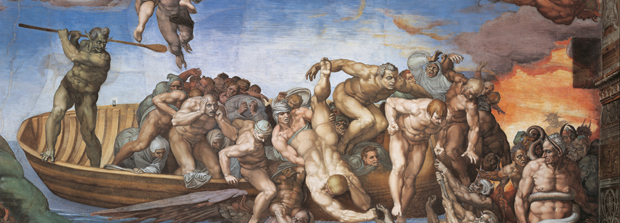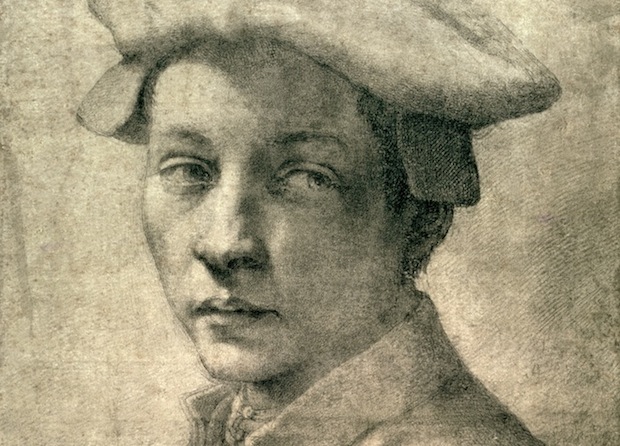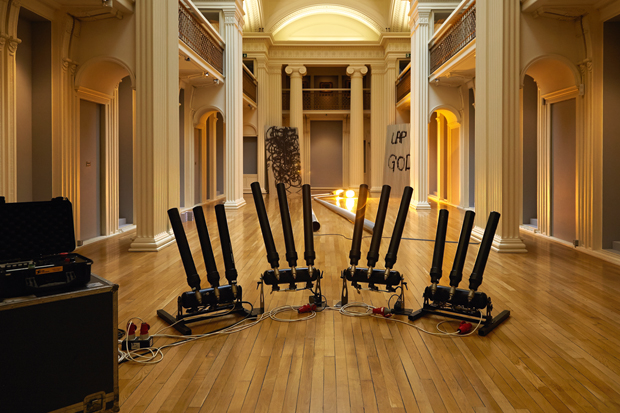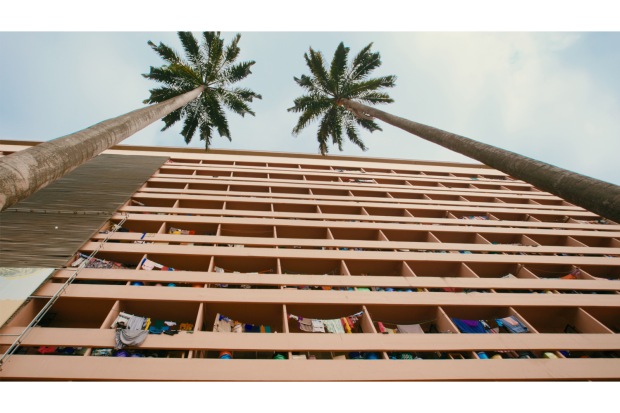It is 450 years since the birth of William Shakespeare. The anniversary has been hard to avoid in this country, which is entirely appropriate. Shakespeare helped to shape not only our language but also our conception of character and our understanding of the human condition. Our experience of love, of facing death, of loss and of glory, contains echoes of Shakespeare, even if we hardly ever read him or see his plays.
It is also 450 years since the death of Michelangelo. That anniversary has hardly been noticed here — although Michelangelo had as great an impact on visual arts in the West as Shakespeare has had on its literature. For centuries, every painter and sculptor felt the need either to emulate Michelangelo, or to escape his influence. Many still do.
Michelangelo did more than anyone else to create the idea of the artist as a solitary, divinely inspired individual, answerable to no one and nothing except his talent. Before him, painting and sculpture were viewed as a form of manual labour, and their practitioners were seen as artisans — and not particularly skilled or remarkable ones at that.
Michelangelo was the first artist who demanded to be treated as a special kind of person, outside the conventional social hierarchy; an individual who, because of his extraordinary abilities, stood on equal terms with his aristocratic patrons. He demanded not just their money, but their respect too. So eager were his patrons to persuade him to work for them that respect is what he got — even when he treated them, as he frequently did, with disdain bordering on contempt. Other artists were imprisoned for fraud when they failed to deliver work for which they had been paid. Michelangelo usually received another commission from a patron desperate to get something from the hand of the ‘Divine Master’.
This made Michelangelo by far the richest artist of his generation, and perhaps the richest, in inflation-adjusted terms, until the 20th century. He said he ‘always lived like a poor man’, often in two rooms, with only one servant — and it is true: he did. But when he died, he was found to have enough money to buy almost any palace in Rome in cash. That sum did not even include the value of his very substantial property portfolio.
Michelangelo was also the first artist to have an ego so great that no amount of flattery, however gross, was sufficient. When Giorgio Vasari published the first edition of his Lives of the Most Eminent Painters, Sculptors and Architects, he made Michelangelo the culmination of the story of European art. Michelangelo was the only modern artist to have surpassed the ancients. He was the greatest sculptor, painter and architect ever.
Michelangelo reacted to this fawning portrait with fury. Not because it was too adulatory, but because it was not adulatory enough. Vasari’s fault seems to have been to point out that Michelangelo had been apprenticed to the Florentine painter Domenico Ghirlandaio. Vasari also noted that, after leaving Ghirlandaio’s workshop, Michelangelo had been taught the rudiments of sculpture by a pupil of Donatello. But Michelangelo’s view of himself was that no one had taught him anything. If he had had any help, it came directly from God, and not from any merely human teacher.
Michelangelo was essentially self-taught in one of the arts in which he excelled: architecture. But he had that in common with several Renaissance artists, such as Leonardo da Vinci and Raphael, who ventured into architecture without any formal training. Michelangelo was 43 when he designed a façade for the Church of San Lorenzo in Florence. He won the commission jointly with Baccio d’Agnolo, an experienced architect who had already designed several palaces. Michelangelo must have picked up a great deal from Baccio. But true to his obsessive desire to control everything, he got rid of Baccio within a year, and had himself appointed sole architect.
Michelangelo came up with a drawing and a wooden model, but his audacious and innovative façade was never built. When the contract was cancelled, he drafted a furious letter to Pope Leo X saying he could never recover from the ‘enormous insult’ to his reputation. In fact, Clement VII, the next Medici pope, soon asked him to design a library to house the Medici collection of books and manuscripts. This was built, and it is one of the most beautiful of all Michelangelo’s works. The staircase alone, with its stone curves and scrolls, is stupendous.
Michelangelo was never wholly satisfied by anything he did. He seems to have felt proudest of two of his earliest works, both of which were completed before he was 28: the ‘Pietà’, now in St Peter’s; and ‘David’, the first colossal stone sculpture since antiquity. As he got older, his unfinished sculptures started to outnumber his finished ones. He frequently concluded that he was incapable of realising his vision and would abandon the block of marble he thought he had ruined.

He took a hammer to the sculpture known as the ‘Bandini Pietà’, smashing off one of Christ’s arms and damaging the Virgin and the other figures. His method of sculpting marble seems to have hovered perpetually on the edge of destroying his own work. Blaise de Vigenère, who witnessed Michelangelo sculpting, was astonished at the violence with which the artist, then over 75 years old, attacked the block of stone. De Vigenère thought the marble was going to shatter under the weight of Michelangelo’s blows. And he was sure that had Michelangelo’s chisel gone just slightly deeper at any point, he would have ruined everything.
Perhaps the most accessible of Michelangelo’s works are his drawings. His finished pieces, which he often gave as presents, have a captivating beauty. But when you look at the sketches in which he works out different poses, you get the spine-tingling feeling that you are seeing him thinking.
Michelangelo diminished his dependence on assistants to an extent unparalleled among the artists of his time. The Sistine Chapel seems to have been entirely his own work. He had workmen to grind and mix colours for him. But he did all the actual painting himself.
The image of God creating Adam has become less an icon than a visual cliché, reproduced so many times that it can be difficult to realise just how extraordinary it is. As for the Chapel as a whole — ‘The Last Judgment’ on the end wall included — it is, as Goethe said, ‘impossible to have a full idea of what humanity is capable of achieving’ without having seen it.
The Sistine Chapel commands admiration but not love. It is not, as a totality, beautiful. Even for the committed Christian, its grim vision of sinfulness, death and damnation is not easy to share.
Michelangelo aimed to make those who viewed the Sistine Chapel feel reverence for God’s creation, and humility in the face of his power and implacable judgment. In a secular world, perhaps the sense of awe is as close as we can get to those feelings. It is a testament to the power of Michelangelo’s vision that he can evoke such a response. Not even Shakespeare can quite do that.
Got something to add? Join the discussion and comment below.
Get 10 issues for just $10
Subscribe to The Spectator Australia today for the next 10 magazine issues, plus full online access, for just $10.
Alasdair Palmer has been public policy editor at the Sunday Telegraph and a speechwriter at the Home Office.
You might disagree with half of it, but you’ll enjoy reading all of it. Try your first month for free, then just $2 a week for the remainder of your first year.














Comments
Don't miss out
Join the conversation with other Spectator Australia readers. Subscribe to leave a comment.
SUBSCRIBEAlready a subscriber? Log in